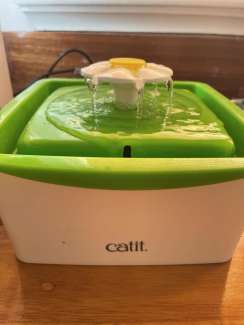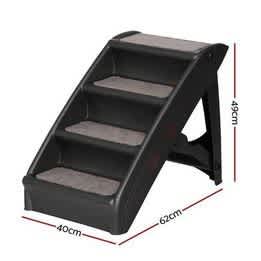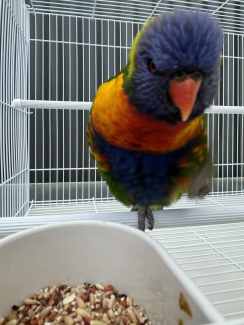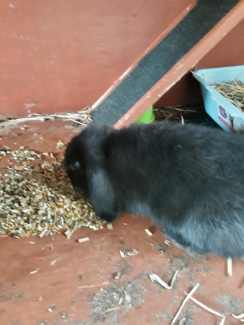Bringing joy and health to our beloved pets begins with providing them with a well-balanced diet. As responsible pet owners, we understand that introducing a new diet requires careful planning to ensure a seamless pet food transition for our furry companions. In this comprehensive guide, we’ll explore the importance of transitioning your pet to a new diet gradually, avoiding sudden changes that could lead to discomfort or health issues.
Preparing for the Transition
Our pets communicate with us in their own unique ways. Often, they show us when it’s time to change your dog’s food through signs such as decreased appetite, weight fluctuations, or skin issues. Changing dog foods can lead to digestive disturbances, so it’s crucial to approach change with caution. By opting for a gradual transition, we can ease our pet’s body into accepting the new dog food, reducing the risk of discomfort and ensuring they receive proper nutrition.
Before embarking on a diet transition, consider consulting a veterinarian. They can provide valuable insights into your pet’s specific dietary needs, helping you select the right adult dog food or puppy food that suits their age, breed, and health condition. Gather all necessary supplies, including the new food, feeding bowls, and any additional information or guidelines from the vet. If you’re searching for a new pet, we have a wide selection on Gumtree.
Transitioning to a New Diet: Step-by-Step Guide
Week 1: Introduction of the New Diet
To kickstart the transition, mix a small amount of the dog food with your dog’s current food in specific ratios. Monitor their response closely during this week, ensuring they don’t experience any food intolerance or adverse reactions. Adjust the ratio as needed based on their comfort and tolerance level.
Week 2: Increasing the New Diet’s Proportion
As your pet becomes accustomed to the new diet, gradually increase the proportion of the dog’s food while reducing the old food. Continue observing their behaviour and dog’s health, making any necessary adjustments along the way.
Week 3: Full Transition to the New Diet
At this stage, your pet should be ready for a complete transition to the new diet. Eliminate the old pet’s food entirely from their meals. Pay attention to any challenges or concerns that arise, and don’t hesitate to seek professional advice if needed.
Potential Challenges
Transitioning your pet to a new diet can be a rewarding experience, but it may also come with its fair share of challenges. Understanding and being prepared to tackle these hurdles will help ensure a successful and smooth transition for your furry friend. Let’s explore some common challenges that you may encounter during your dog’s diet change and how to handle them:
- Loss of Appetite: During the diet transition, pets may experience a temporary loss of appetite due to the change in taste and texture. Be patient, avoid forcing them to eat, and offer their new food in small quantities, waiting for their natural hunger cues. Keep mealtime consistent and avoid giving treats or table scraps during this period, as it may interfere with their acceptance of the new diet. If appetite loss persists, consult your veterinarian to rule out underlying health issues.
- Digestive Upsets: Digestive Upsets: Sensitive stomachs may react to a diet change, leading to digestive upsets like diarrhoea or vomiting. Gradual transition over several days can help minimize these issues as your dog’s digestive health adjusts. If upsets persist, revert to the previous diet and consult your veterinarian for advice on alternative options or food sensitivities.
- Allergic Reactions: Pets may develop allergic reactions to new diet ingredients, showing as skin rashes, itching, or gastrointestinal issues. If you notice any signs of an allergic reaction, stop the new food and consult your veterinarian. They can identify the allergen and suggest a hypoallergenic diet that meets your pet’s needs while avoiding triggers.
Maintaining a Healthy Diet in the Long Run
Congratulations on successfully transitioning your pet to their new diet! Now that they have adapted to their new food, it’s crucial to focus on long-term diet management to ensure their continued well-being. Just like humans, pets benefit from a balanced and varied diet that meets their nutritional requirements. Let’s explore some essential tips to help you maintain a healthy diet for your furry friend in the long run.
Practice Portion Control
Portion control is vital for your pet’s overall health and weight management. Overfeeding can lead to obesity, which in turn increases the risk of various health issues such as joint problems, diabetes, and heart disease. On the other hand, underfeeding can result in malnutrition and nutrient deficiencies.
Consult your veterinarian to determine the appropriate portion size for your pet based on their age, size, activity level, and health condition. Avoid free-feeding, where food is left out all day, as it can lead to overeating. Stick to regular feeding times and measure their food to ensure they receive the right amount of nutrients without excess calories.
Incorporate Variety into Meals
Pets, like humans, enjoy variety in their diets. Rotating different types of dog foods can not only keep mealtime exciting for your pet but also provide a diverse range of nutrients. Consider incorporating various protein sources, such as chicken, beef, fish, and lamb, into their meals. Additionally, vary the types of vegetables and grains you offer, providing essential vitamins, minerals, and dietary fibres.
When introducing new foods, do it gradually to avoid upsetting their digestive system. Pay attention to any allergic reactions or sensitivities that may arise and adjust their diet accordingly.
Monitor Weight and Body Condition
Regularly monitor your pet’s weight and body condition to ensure they maintain a healthy physique. Check for signs of weight gain or loss, and make adjustments to their portion sizes as needed. Feel their ribs; they should be easily felt with a slight covering of flesh. An excessive layer of fat over the ribs or difficulty feeling them may indicate that your pet is overweight.
If you have concerns about your pet’s weight or body condition, consult your veterinarian. They can provide guidance on adjusting their diet and exercise routine to achieve a healthy weight.
Hydration is Key
Water is essential for your pet’s well-being. Always provide fresh and clean water for your furry friend to keep them hydrated throughout the day. Hydration is crucial for their digestion, circulation, temperature regulation, and overall health.
Regular Vet Check-ups
Regular veterinary check-ups are essential for monitoring your pet’s health and dietary needs. Your veterinarian can assess your pet’s overall well-being, weight, and body condition, making any necessary adjustments to their diet. They can also address any specific health concerns or nutritional requirements your pet may have.
During these check-ups, discuss any changes in your pet’s behaviour, appetite, or energy levels. Your veterinarian can offer valuable insights and recommend appropriate dietary changes or supplements if needed.
The Key to a Happy and Healthy Life
Transitioning your pet to a new diet is a rewarding journey that requires patience and dedication. By following the tips and guidelines in this comprehensive guide, you can ensure a smooth change for your furry friend. Don’t forget to visit our pet advice section for more information. Remember, their well-being and happiness depend on a thoughtful and gradual approach to diet transitions. With proper planning and care, your beloved pet will thrive on their new diet, bringing joy and companionship for many years to come.

























